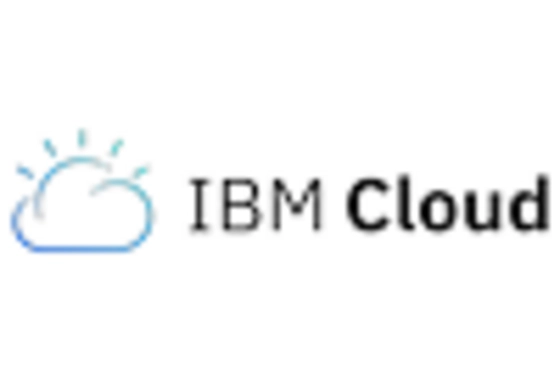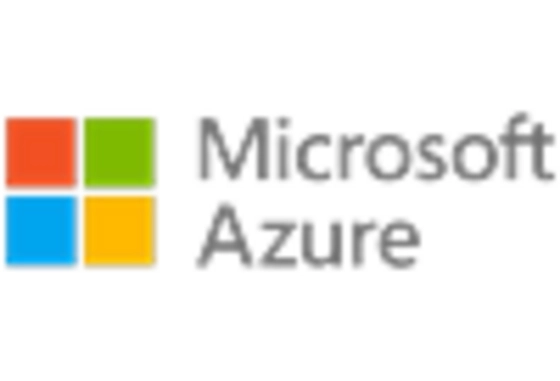Cost Efficiency and Scalability
Cost efficiency and scalability are pivotal drivers in the Healthcare Cloud Infrastructure Market. Healthcare organizations are increasingly adopting cloud solutions to reduce operational costs associated with traditional IT infrastructure. By leveraging cloud services, organizations can scale their resources according to demand, thereby optimizing expenditures. Reports indicate that healthcare providers can save up to 30% on IT costs by transitioning to cloud-based systems. This financial incentive, coupled with the flexibility offered by cloud solutions, is propelling the adoption of cloud infrastructure across various healthcare settings, from hospitals to outpatient facilities.
Collaboration and Interoperability
Collaboration and interoperability are emerging as critical drivers in the Healthcare Cloud Infrastructure Market. As healthcare systems strive for integrated care delivery, cloud-based platforms facilitate seamless data sharing among providers, payers, and patients. This interconnectedness is essential for enhancing care coordination and improving patient outcomes. The market for healthcare interoperability solutions is anticipated to grow significantly, as stakeholders recognize the value of collaborative care models. Consequently, the ability of cloud infrastructure to support interoperability is becoming increasingly vital, fostering a more cohesive healthcare ecosystem.
Enhanced Data Analytics Capabilities
In the Healthcare Cloud Infrastructure Market, the integration of advanced data analytics capabilities is becoming increasingly vital. Healthcare organizations are leveraging cloud-based analytics tools to derive actionable insights from vast amounts of patient data. This shift is indicative of a broader trend towards data-driven decision-making in healthcare. The market for healthcare analytics is expected to reach approximately USD 50 billion by 2026, reflecting a growing recognition of the importance of data in improving clinical outcomes and operational efficiency. Consequently, cloud infrastructure is essential for enabling sophisticated analytics that can drive innovation and enhance patient care.
Regulatory Compliance and Data Security
The Healthcare Cloud Infrastructure Market is significantly influenced by the stringent regulatory landscape surrounding data security and patient privacy. As healthcare organizations increasingly migrate to cloud solutions, they must ensure compliance with regulations such as HIPAA and GDPR. This necessity drives the demand for cloud providers that offer robust security measures and compliance certifications. The market for healthcare cloud security solutions is projected to grow substantially, as organizations prioritize safeguarding sensitive patient information. Thus, the emphasis on regulatory compliance and data security is a key driver shaping the evolution of cloud infrastructure in healthcare.
Rising Demand for Remote Patient Monitoring
The Healthcare Cloud Infrastructure Market is experiencing a notable surge in demand for remote patient monitoring solutions. This trend is driven by the increasing prevalence of chronic diseases and the need for continuous patient engagement. As healthcare providers seek to enhance patient outcomes, cloud-based platforms facilitate real-time data collection and analysis, allowing for timely interventions. According to recent estimates, the remote patient monitoring segment is projected to grow at a compound annual growth rate of over 25% in the coming years. This growth underscores the critical role of cloud infrastructure in supporting scalable and efficient monitoring solutions, thereby transforming patient care delivery.

















Leave a Comment